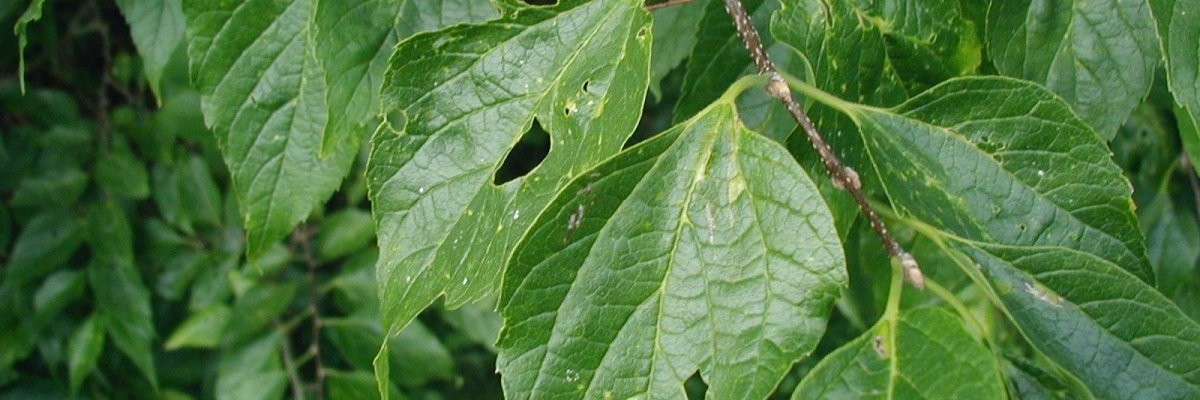hackberry tree leaves turning black
The browning of the hackberry Celtis occidentalis leaves is probably due to lace bugs. You likely have a population of aphids in the tree.
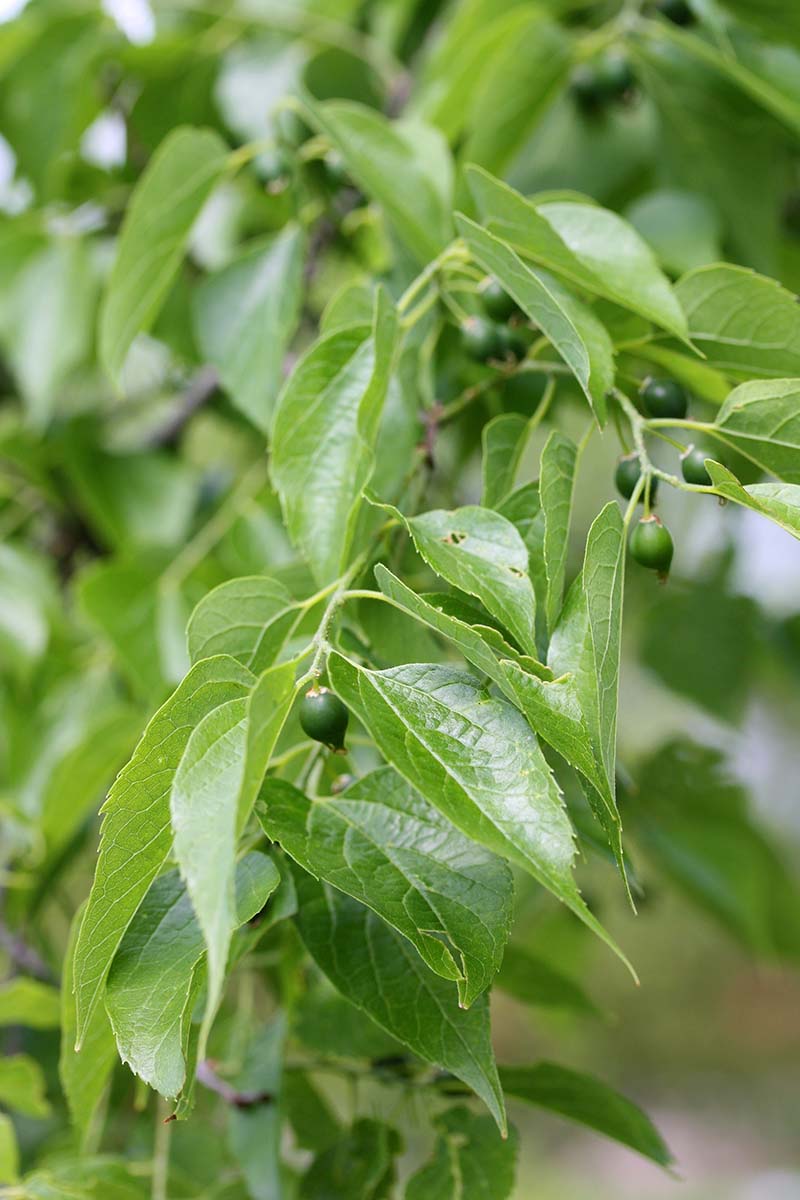
How To Grow Hackberry Trees Gardener S Path
The leaves are turning brown and are falling down a lot in the last weekThe leaves have the whitish wart-like bumps on the underside and they also have black tiny dots covering the leaf.
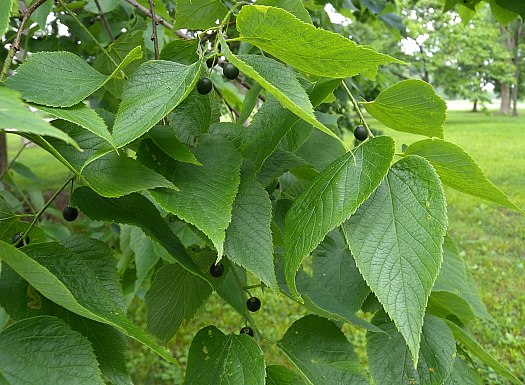
. Also known as American hackberry common hackberry Celtis occidentalis is a fast-growing member of the elm family. The hackberry tree or Celtis occidentalis is a vigorously growing member of the elm family. Raised cushion-like bumps on affected branches may be cream to orange or red turn black with age.
The hackberry trees leaves change color in the fall turning yellow before falling off of the tree. Another name for Celtis laevigata is southern hackberry. There are tiny black winged bugs with tinier babies all over the inside of the leaf.
This fall the deck was covered with a sticky saplike substance that turned a bright green umbrella black. Lace bugs are sap feeding insects commonly found on the leaves of shade and ornamental trees in Iowa. 10 24 m wide.
This causes the characteristic bleached appearance of the leaves that actually is clusters of tiny whitish dots or chlorotic specks on the upper leaf surfaces. They feed on sap and produce large amounts of honeydew which can in turn cause problems with black sooty mold growth. Trees most commonly affected are hackberry sycamore and oak.
But if you have any trouble along the way do leave a comment below. During spring and summer the females will reproduce asexually. In the fall months the leaves will turn into a bland yellowish color before falling off.
Also called the sugar hackberry the sugarberry tree is a native medium-sized tree with pointed leaves small clusters of greenish flowers and reddish-purple edible fruit. Hackberry disease 269208. This disease usually appears late in the growing season.
My Hackberry tree appears to have 2 diseases going on. Also allow free air movement around the plant and spray it with horticultural oil. Improper watering can cause plants leaves to turn black and drop prematurely but this can happen if you water too much or if you water too little.
Yellow discolorations on upper leaf surface above the nipple galls. Adult lace bugs have attractive wings that are beautifully sculptured with an intricate pattern of veins resembling. They overwinter as eggs on the tree and emerge in the spring with new leaf growth.
The aphids infest the lower sides of leaves in large numbers creating small globs of fuzzy mass. The browning of the hackberry Celtis occidentalis leaves is probably due to lace bugs. Well with this info you can narrow down your suspect.
While overwatering causes margins or tips of leaves to turn black and roots to rot underwatering causes them to dry up and appear scorched especially if exposed to direct sunlight. The hackberry is one of the toughest trees and experts have referred to it as one tough tree. You can see the eggs of the psyllids in your picture.
And then move on to curing the problem of its root. Sugarberry trees grow between 50 and 70 ft. Hackberry tree may be referred to as Celtis occidentalis in this article in fact those are the same plants Celtis occidentalis is the botanical name for Hackberry tree.
Now you know that the fungus insects fertilizer and even water are the 4 main reasons for hydrangea leaves turning black. Honeydew coats everything below and makes great food for. Adults are light brown with flecks of creamish-white and look like miniature cicadas.
Its attractive serrated leaves range from dull green to glossy and have unequal bases and tapered ends. The insects feed on the sap from the leaves and secrete sticky honeydew that in turn encourages the growth of black sooty fungus on infested tree areas. Pear tree leaves turn black and fall off when the tree is infected by Fabraea leaf spot.
Pear tree leaves turning black and falling off. The hackberry can be grown in various soils and locations and can thrive under a wide range of temperatures and. Winged forms may also be observed and wings have obvious black markings on them.
When the eggs hatch the insects feed by sucking on the sap of the leaves which is why the leaves are yellow. A very common pest of the Hackberry is the Hackberry Leaf Gall Psyllid. Plants heavily damaged by lace bugs usually have the underside heavily speckled with small black shiny varnish spots excrement.
This disease is also commonly called the Black spot disease. Circular nipple-like swellings that project from the undersides. Aphids suck sap from leaves and secrete a sticky liquid called honeydew.
Premature leaf drop can occur during heavy infestations. Fabraea leaf spot is a fungal disease whose symptoms are seen in the leaves and fruits. To prevent blackening water your plant only when 1 to 2 inches of soil is dry and do not fertilize too often.
18th to 316th long. It could also be seen on the leaves of nearby plants. The hackberry is also known for its distinctive bark surface which has a corky texture with warts at the base and is often described as stucco-like.
More information on Hackberry nipple. The foliage of trees infected with armillaria mellea starts to discolor and drop prematurely. Overwatering and root rot improper nutrition fungal diseases and pests are the main causes of the plant leaves turning black.
It produces bumpy grayish bark and dark green simple foliage with low-hanging. This pest is normally considered just a nuisance rather than destructive to the tree. 15 21 m tall and 30 to 80 ft.

Common Hackberry Northern Hackberry Nettletree American Hackberry Mdc Teacher Portal

What S Wrong With My Plant Garden University Of Minnesota Extension

Northern Hackberry Real Paleo Food Four Season Foraging

Northern Hackberry Real Paleo Food Four Season Foraging
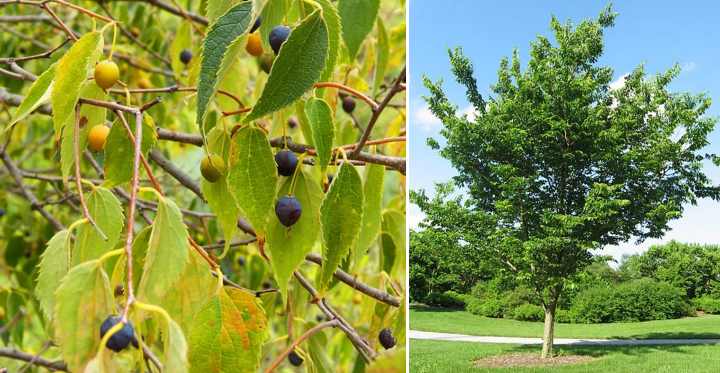
Hackberry Trees Celtis Common Types Leaves Bark Fruit Pictures Identification
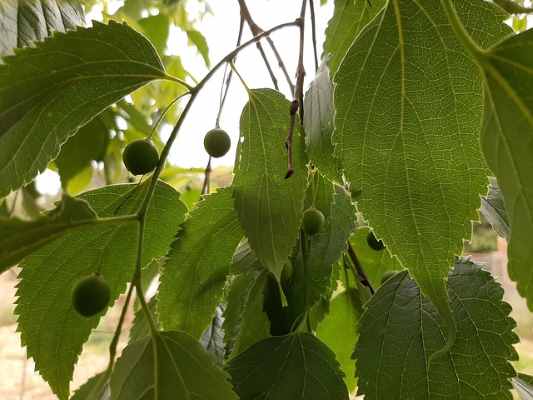
Hackberry Trees Celtis Common Types Leaves Bark Fruit Pictures Identification
A Sticky Situation On Hackberry Trees Pests In The Urban Landscape Anr Blogs
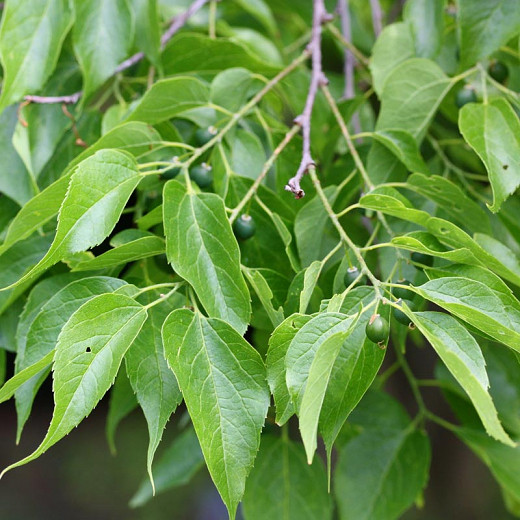
Celtis Occidentalis Common Hackberry

Hackberry Trees The Garden Bench
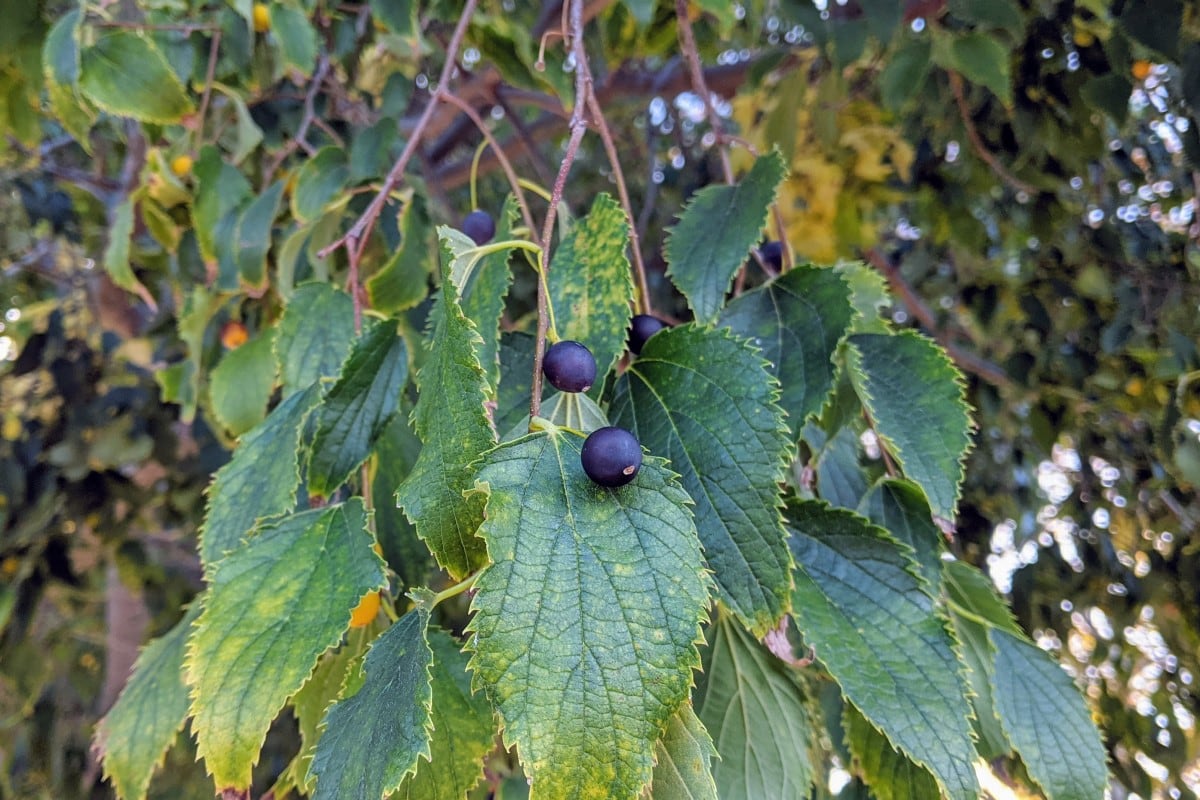
Celtis Hackberry Pollen Allergy A Quick Guide W Photos Allerma

What S Behind That Black Sticky Substance From Your Hackberry Tree
Celtis Occidentalis Hackberry Minnesota Wildflowers
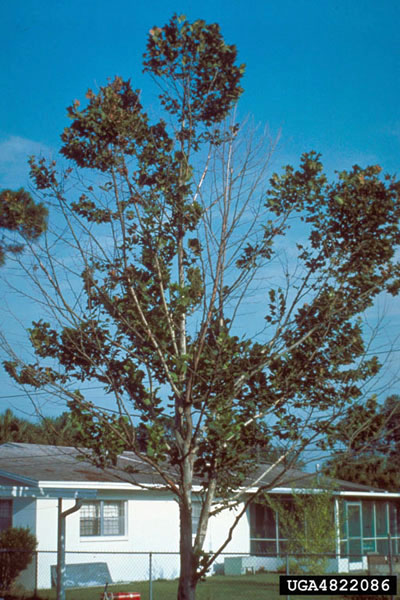
What S Wrong With My Plant Garden University Of Minnesota Extension
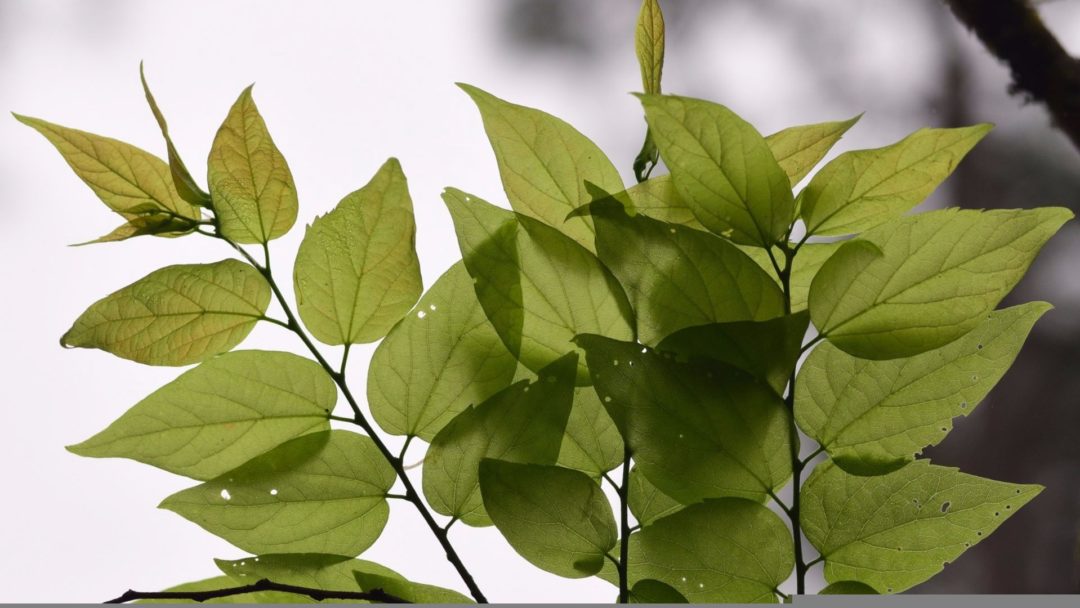
Hackberry One Tough Tree Arbor Day Blog

Common Hackberry Celtis Occidentalis
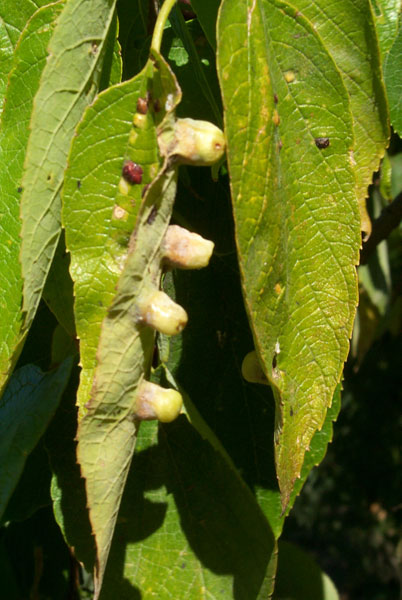
What S Wrong With My Plant Garden University Of Minnesota Extension

Ut Tsu Extension Davidson County Hackberry Trees Turning Black Since The Beginning Of The Year 2000 The Majority Of Exotic Insect Pests That Have Been Introduced Into The United States Have
